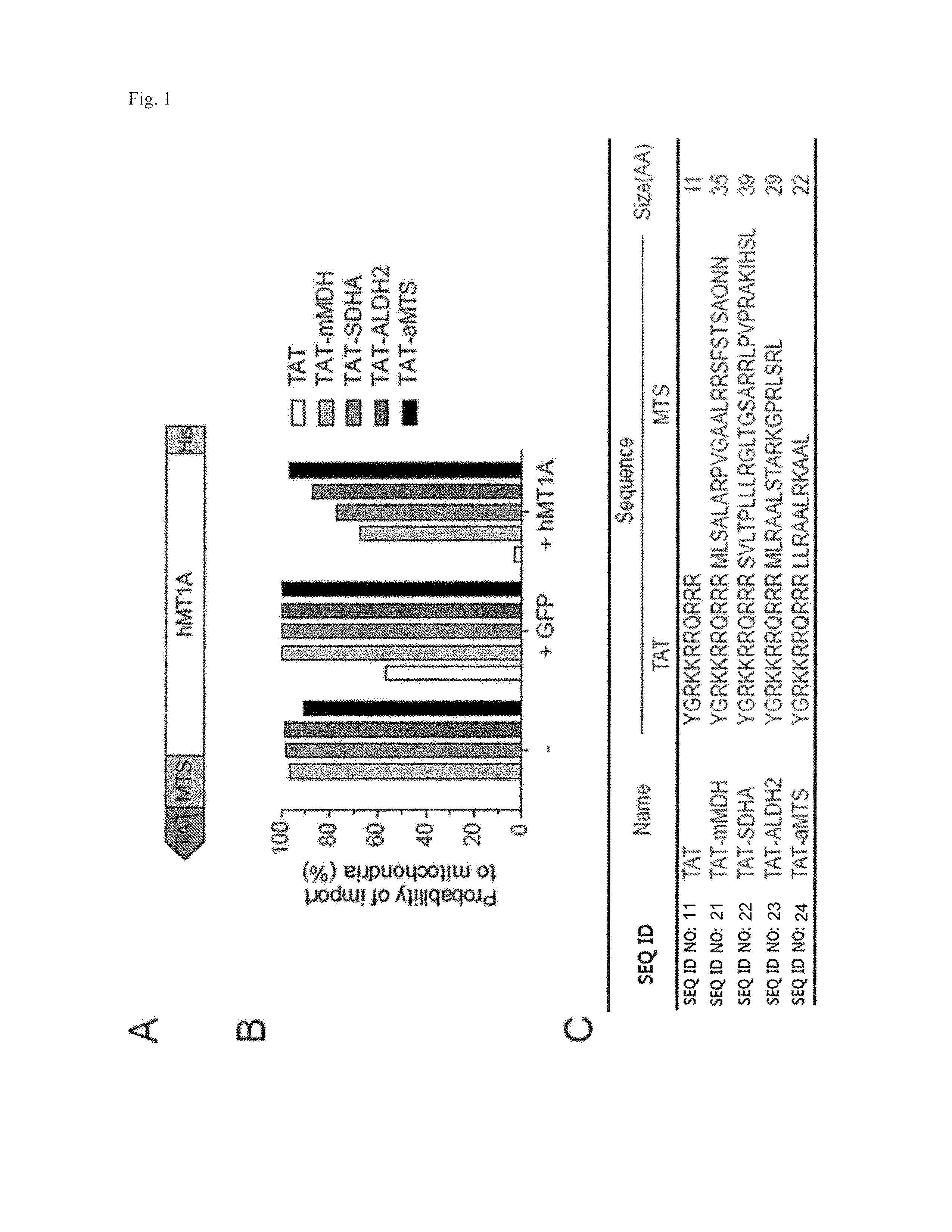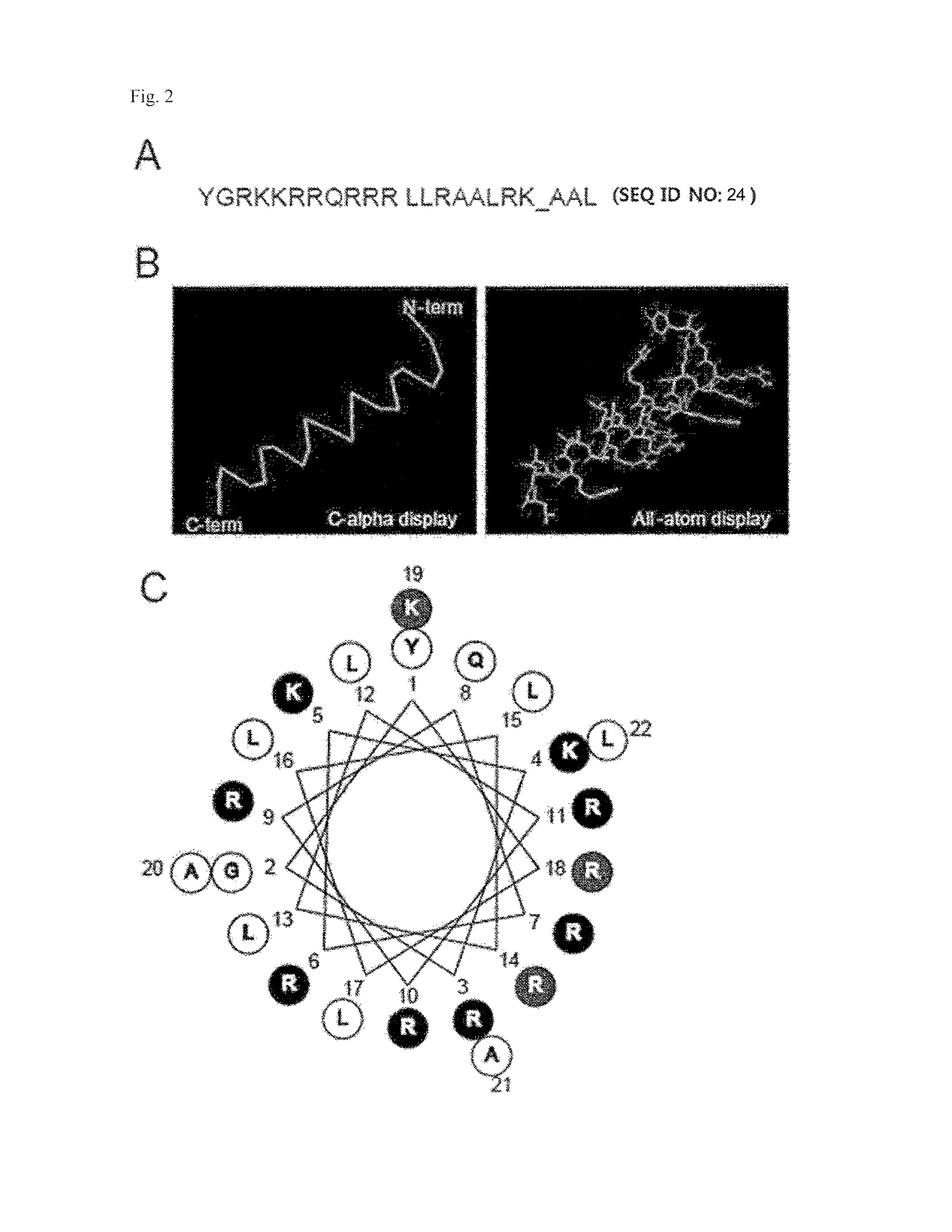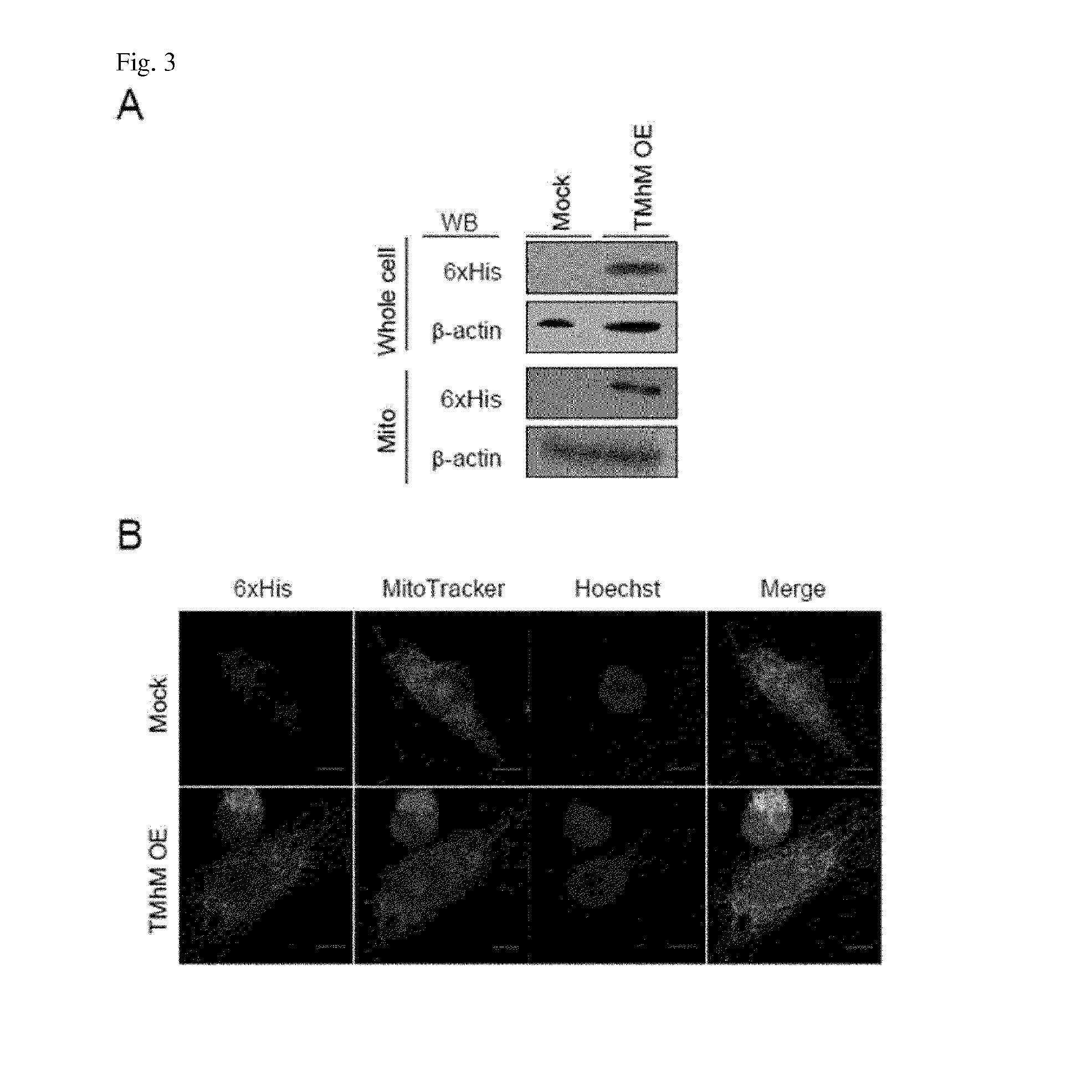Mitochondria targeting peptide
a technology of targeting peptides and mitochondria, which is applied in the direction of peptide/protein ingredients, peptide sources, transferases, etc., can solve the problems of limited number of mitochondria-targeting biological active substances, and achieve the effects of suitable targeting carrier, high efficiency and small siz
- Summary
- Abstract
- Description
- Claims
- Application Information
AI Technical Summary
Benefits of technology
Problems solved by technology
Method used
Image
Examples
example 1
Production of a Novel Mitochondria Targeting Sequence (MTS)
[0097]In order to test mitochondria targeting probabilities, (TAT which is a protein transduction domain with cell membrane permeability), (TAT+mitochondria targeting sequence), and (TAT+mitochondria targeting sequence+protein to be targeted) are grouped and produced respectively. Hereinafter, a mitochondria targeting sequence is abbreviated as MTS.
[0098]MTS according to the present invention is artificially produced, and the respective mitochondria targeting probabilities thereof are virtually predicted using a program ‘MitoProt II.’ Specifically, as a mitochondria sequence according to the present invention, aMTS consisting of SEQ ID NO: 2 (LLRAALRKAAL) is used. As a comparison, sequences derived from malate dehydrogenase (mMDH), succinate dehydrogenase subunit alpha (SDHA), and mitochondria aldehyde dehydrogenase (ALDH2) were used. By binding TAT to each of the sequences, virtual TAT-MTS was produced, and mitochondria tar...
example 2
Prediction on Mitochondria Targeting Sequence (MTS) Structure
[0102]In order to verify if TAT-MTS is transported to mitochondria, a secondary structure of a TAT-MTS peptide was predicted and represented in FIG. 2.
[0103]Results from a COOT program showed that the TAT-MTS peptide exhibits an alpha-helical structure (FIG. 2B). Further, a helical wheel projection showed that TAT-MTS is amphiphilic (FIG. 2C). Also, MitoProt II program predicted that a processing site exists between TAT-MTS and hMT1A (FIG. 2A). The processing site is where noted by an underbar and corresponds to a processing site, which is cut when TAT-MTS-hMT1A is transported into mitochondria. From the results of the structure analysis, the present inventors determined that TAT-MTS peptides have a sufficient ability to transport MT1A to mitochondria.
example 3
Cell Culture
[0104]SK-Hep1 cells (human hepatocellular carcinoma cells) were cultured in high glucose (4.5 g / L) Dulbecco's Modified Eagle's Medium (DMEM) supplemented with 10% fetal bovine serum (FBS) and antibiotics (100 μg / mL of penicillin / streptomycin mixture) in a humidified atmosphere of 5% CO2 and 37° C. SH-SY5Y cells (human neuroblastoma cells) were cultured in DMEM / F12 supplemented with 10% FBs and antibiotics at 5% CO2 and 37° C.
PUM
| Property | Measurement | Unit |
|---|---|---|
| pH | aaaaa | aaaaa |
| molecular weight | aaaaa | aaaaa |
| molecular weight | aaaaa | aaaaa |
Abstract
Description
Claims
Application Information
 Login to View More
Login to View More - R&D
- Intellectual Property
- Life Sciences
- Materials
- Tech Scout
- Unparalleled Data Quality
- Higher Quality Content
- 60% Fewer Hallucinations
Browse by: Latest US Patents, China's latest patents, Technical Efficacy Thesaurus, Application Domain, Technology Topic, Popular Technical Reports.
© 2025 PatSnap. All rights reserved.Legal|Privacy policy|Modern Slavery Act Transparency Statement|Sitemap|About US| Contact US: help@patsnap.com



